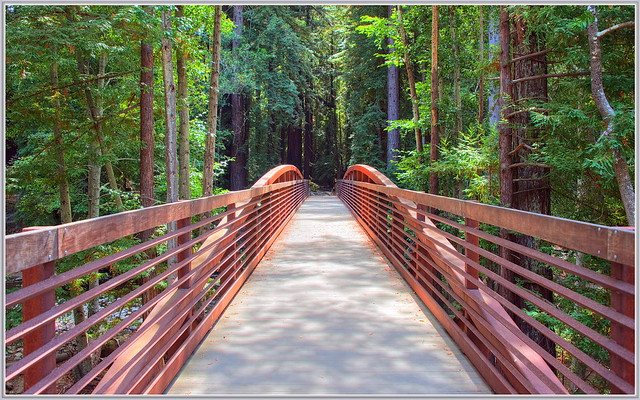
We camped this past weekend at Big Sur, meeting up with some friends from the north. I made the reservations in November and wasn’t really looking at the calendar, so I didn’t realize that the weekend was a nexus of holidays—Passover, Easter, Earth Day. It felt right, though, being under the trees and in the ocean-tinted air, with the river rushing so fast and close that it sounded like rain.
I woke up earlier than everyone else in the mornings and walked through the campground with the moon setting above the ridge. I remembered when I’d found the campsite, the campground had seemed enormous—hundreds of spaces—and I wondered whether it would feel more like being in the middle of a music festival than camping. But no—the combination of the river and the big trees made the sites feel sheltered, and the air had a hushed feeling, even when our neighbors began playing a drum on the verge of quiet hours.
People talk about Big Sur being special, magical. Does the air have something to do with it? Several companies make perfume and candles that are supposed to recall redwoods and ocean waves, rainwater and eucalyptus. Febreze even makes an air freshener called Big Sur—which has some combination of sandalwood, jasmine, and cherry, according to the description.
The air is what brought Charles David Keeling to this campground, too, in 1955. As a post-doc at Cal Tech, he constructed instruments to measure carbon dioxide in the air, but found that the CO2 concentrations in Pasadena varied. So he took his equipment to a campground in Big Sur, an isolated stretch of the California coast.
Blogger Jeff Lewis camped in Big Sur in 2012, and started wondering where, exactly, Keeling made his measurements. After a series of emails with Keeling’s son, Ralph, he learned that the elder Keeling stayed at site 55 in Pfeiffer Big Sur State Park. Here, near the river, Keeling took daytime and nighttime samples of the air that smelled like redwood and rain, and found that the CO2 levels swelled at night and sunk in the morning. In mid-afternoon, the concentration of CO2 in the air was around 310 ppm.
The sites at the campground have been renumbered, but I walked by the place where Keeling had been multiple times, listening to the river, breathing in the deep air.
I remember hearing about the Keeling curve in college, when the carbon dioxide level was 360 ppm. We were going to do something about this now, the class agreed. We would not let this get any worse. We would not drive huge gas-guzzling cars, we would stop factories from polluting, we would figure out a way. But this March, the CO2 levels passed 400 ppm and, cruising along in my minivan, I didn’t even notice.
There are many questions I have put off, or not answered fully, for my children. This weekend, there were more. Why aren’t we going to church on Easter? Can we plant a tree for Earth Day? Why did they see my friend and I right near where the Easter egg jackpot was?
In the past, I have been able to provide enough of an answer so that the questions, for the moment, would stop. But this time, my oldest son said, ”What are you doing here?”
“We’re just out taking a walk by the river,” I said.
“Do you usually take a walk while carrying plastic bags?” he asked. The rest of the morning, the idea of what to tell him, to really tell him, tumbled around in my head long after he and his brothers and friends had moved on to consuming their chocolate bunnies, piece by piece.
*
Image by Flickr user tdlucas500 under Creative Commons license